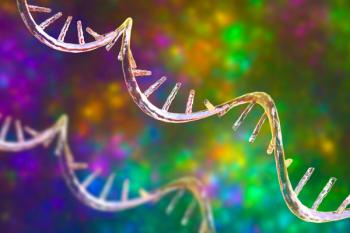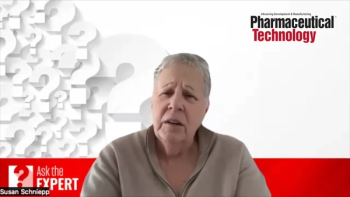
NanoCell’s LNP Platform Shows Promise for In-Vivo CAR-T Development
The new platform delivers CAR-T DNA and transposase directly in vivo, potentially lowering manufacturing complexity and expanding treatment access.
Single IV dose extends lifespans
The study, “T Cell-Specific Non-Viral DNA Delivery and In-Vivo CAR-T Generation Using Targeted Lipid Nanoparticles,” yielded results generated by a dual-CAR construct targeting CD19 and CD22, which was developed by Shanghai Cell Therapy Group (SHCell) (1). Researchers demonstrated that a single intravenous dose of NCtx prompted robust CAR-T cell generation in humanized mouse models, as well as effective tumor control and “significantly” extended survival.
“This research demonstrates a new path forward for CAR-T therapy,” said Jacek Lubelski, PhD, senior author of the study and chief technical officer at NanoCell Therapeutics, in a press release (1). “By enabling in-vivo CAR-T generation through a single, targeted nanoparticle injection, we can potentially dramatically simplify treatment protocols while expanding access in the future to patients worldwide who currently cannot benefit from conventional CAR-T therapies.”
“Our collaboration with SHCell underscores the power of combining innovative delivery platforms with cutting-edge CAR designs,” said Maurits Geerlings, MD, CEO and president of NanoCell Therapeutics, in the press release (1). “We are excited about the potential of this partnership to accelerate the development of transformative therapies for patients with B-cell cancers and beyond.”
CAR-T in the news
Much industry focus has been concentrated on CAR-T therapies in 2025. In June, FDA
Sarah Hein, co-founder and CEO of March Biosciences, provided an update on MB-105 in a March 2025 interview with BioPharm International®, commenting on the general state of the evolution of immunotherapies in oncology.
“The majority of those diseases are derived from your B cells. And there's a lot of therapies available for those patients all the way up to and including these very powerful cell therapies,” Hein said in the interview (5). “Unfortunately, for the T-cell malignancies, what we see is there really is no standard of care for these patients after the disease becomes relapsed or refractory to primary care, and so unfortunately, the prognosis is very, very poor, and there's a number of challenges that have held back the development of cell therapies for these diseases.”
The data presented by NanoCell has the potential to have broader meaning for cancer research. Below are some possible impacts.
Drug discovery and development
For those in drug discovery, the NCtx platform may open new opportunities in designing next-generation cell therapies that can be evaluated entirely in vivo (6). This capability could enable more rapid exploration of CAR constructs and reduce reliance on viral vector development, which has traditionally posed technical and regulatory constraints (7). The data also show that dual-targeting approaches—such as those against CD19 and CD22—can be effectively encoded into a single DNA payload, supporting efforts to preempt tumor antigen escape mechanisms (8).
In the context of drug development, this delivery strategy eliminates the need for complex ex-vivo cell modification and reinfusion, potentially lowering barriers to preclinical testing and accelerating the pathway to first-in-human studies (9). According to NanoCell, the company has initiated an Investigational Medicinal Product Dossier in Europe and intends to advance the platform into clinical development. These steps suggest that in-vivo CAR-T delivery could emerge as a new therapeutic category distinct from conventional autologous cell therapy models.
Manufacturing and access considerations
While conventional CAR-T production depends heavily on individualized cell processing, vector manufacturing, and cold-chain logistics, all of which contribute to high costs and scalability challenges, NCtx relies on synthetic production of DNA and RNA components formulated into LNPs, a process with more streamlined quality control requirements and greater potential for centralized, high-volume manufacturing (10). If validated in human studies, this approach could reduce per-treatment costs and expand patient access to CAR-T therapy, particularly in resource-constrained healthcare systems (6).
Regulatory outlook and beyond
Because this platform depends on genomic integration via a transposase, regulators will likely require extensive insertion-site profiling and long-term follow-up to assess risks of insertional mutagenesis. Moreover, as with other LNP-based delivery systems, off-target effects, immunogenicity, and variability in cellular uptake will be important considerations in clinical translation (11).
In the evolution of in-vivo gene and cell therapy strategies, the NanoCell study may prove instructive. While ex-vivo CAR-T therapies have already demonstrated clinical success, their high complexity and cost have limited broader adoption. A non-viral, in-vivo alternative could significantly reshape how the pharmaceutical industry approaches the design, development, and delivery of engineered immune cell therapies.
References
1. NanoCell Therapeutics.
2. Bimbo, J. F.; van Diest, E.; Murphy, D. E.; et al. T Cell-Specific Non-Viral DNA Delivery and In-Vivo CAR-T Generation Using Targeted Lipid Nanoparticles. J. ImmunoTher. Cancer 2025, 13 (7) e011759. DOI:
3. FDA.
4. March Biosciences.
5. Haigney, S.
6. Bui, T. A.; Mei, H.; Sang, R.; et al. Advancements and Challenges in Developing In-Vivo CAR-T Cell Therapies for Cancer Treatment. EBioMedicine 2024, 106, 105266. DOI:
7. Short, L.; Holt, R. A.; Cullis, P. R.; and Evgin, L. Direct In-Vivo CAR-T Cell Engineering. Trends Pharmacol. Sci. 2024, 45 (5) 406–418. DOI:
8. Wang, Z.; Wang, M.; Wang, M.; et al. From Molecular Design to Clinical Translation: Dual-Targeted CAR-T Strategies in Cancer Immunotherapy. Int. J. Biol. Sci. 2025, 21 (6) 2676–2691. DOI:
9. Meng, S.; Hara, T.; Miura, Y.; et al. In-Vivo Engineered CAR-T Cell Therapy: Lessons Built from COVID-19 mRNA Vaccines. Int. J. Mol. Sci. 2025, 26 (7) 3119. DOI:
10. Khawar, M. B.; Afzal, A.; Si, Y.; and Sun, H. Steering the Course of CAR-T Cell Therapy with Lipid Nanoparticles. J. Nanobiotechnol. 2024, 22, 380. DOI:
11. Qu, Y.; Liu, R.; Sun, D.; and Dai, Z. Critical Considerations of mRNA–LNP Technology for CAR-T Therapy: Components, Payloads, and Emerging Horizons. Mater. Chem. Front. 2024, 8, 3106–3135. DOI:
Newsletter
Stay at the forefront of biopharmaceutical innovation—subscribe to BioPharm International for expert insights on drug development, manufacturing, compliance, and more.




